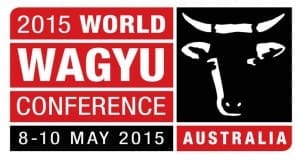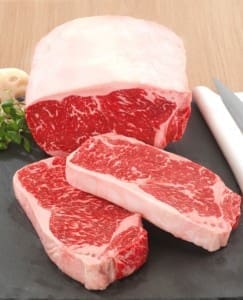Beef Central’s recent industry profile of Australia’s Top 25 Lotfeeders clearly shows how important the Wagyu sector is becoming within the fabric of the Australian grainfed beef industry.
The report (click here to access) found that 12 of the nation’s largest feedlots now include Wagyu cattle on their stock inventory. Within that list, eight of the top ten entries include Wagyu feeding operations.
Because some larger grainfeeding businesses operate multiple feedlot sites, the actual number of feedlots included in the Top 25Lotfeeders list was 37.
 This summary of Wagyu feeding operations, extracted from Beef Central’s broader Top 25 Lotfeeders report, was compiled in advance of the 2015 World Wagyu Conference starting in Yeppoon on Friday next week.
This summary of Wagyu feeding operations, extracted from Beef Central’s broader Top 25 Lotfeeders report, was compiled in advance of the 2015 World Wagyu Conference starting in Yeppoon on Friday next week.
The report found that the Australian Agricultural Company is easily the largest Wagyu feeder in Australia, and in fact the world.
AA Co now devotes 100 percent of pen space at its two large Queensland feedlots to company-bred or bought Wagyu feeder cattle.
The company’s Aronui feedlot on the Darling Downs currently feeds 16,000 head of F1 to Fullblood Wagyu, while the Goonoo feedlot in Central Queensland houses a further 17,500 head. In addition to ‘in-house’ feeding, in February AA Co had an additional 22,800 head of cattle (Wagyu and conventional breeds) on feed in six other yards stretching from southern NSW to southern Queensland.
Collectively and individually, AA Co’s two company-owned yards are probably the largest individual Wagyu feeding operations in the world, accounting for about 35,000 head of turnoff cattle each year.
Further below in this article are profiled some of the other significant Australian Wagyu feeders found within Beef Central’s Top 25 report. Each entry is clickable, taking readers through to more comprehensive information from the recent Top 25.
It is estimated that because of the duration of feeding involved with Wagyu cattle (respondents reported feeding regimes ranging from 350 days to 600 days, for F1 to Fullblood cattle), Wagyu in fact occupy a disproportionately large amount of one-time feedlot occupancy across the industry.
Wagyu may currently represent close to 10 percent of occupied feedlot space within the largest 37 listed feedlots in Australia, the report suggested.
While the nature of the survey did not allow for an overall assessment of specific Wagyu cattle numbers on feed, it provided insight into the growing significance of longfed Japanese cattle in many feedlot operations.
Responses to Beef Central’s survey suggested that there are a number of attractions in feeding Wagyu cattle for many feedyard operators:
- Firstly, modern feedlots aim to stay as close as possible to full occupancy, for operational efficiency reasons. The ‘length of tenure’ for Wagyu feeders helps maintain high occupancy levels, with less exposure to seasonal influences
- Wagyu have a widely-acknowledged reputation for being among the ‘easiest’ cattle to feed, with low susceptibility to respiratory infection than some other descriptions
- For those feedlots operating custom-feeding programs for outside clients, there is a strong tendency for Wagyu customers to be ‘repeat business’ or permanents, rather than ad hoc customers.
The biggest detraction identified in Wagyu feeding was its impact on the feedlot’s annual stock turnover. While this aspect depends very much on how a feedlot business is structured, and who it is feeding for, the survey illustrated that some dedicated Wagyu feedlots exhibit annual stock turnover of less than one beast per year, relative to feedlot capacity. Other yards feeding yearlings for the domestic trade, for example, can have stock turnover of 5.5 animals a year, relative to capacity.
Stock turnover in isolation is not a good measure of the impact of Wagyu feeding, given the relative value of a yearling and a longfed F1 or Fullblood Wagyu animal at the end of their feeding period.
Few large feedlots in Australia, with the exception of AA Co’s two yards mentioned above, feed Wagyu exclusively. Much more common is a longfed Wagyu component within a larger inventory of conventional cattle, fed for shorter periods.
Other prominent entries
Some other prominent entries from Beef Central’s Top 25 Lotfeeders list with Wagyu feeding interests (links highlighted in red are clickable for more information) include:
JBS Australia (Position 1): The world’s largest lotfeeder and beef processor last year commenced feeding modest numbers of Wagyu cattle at its Prime City feedyard near Griffith in NSW. The cattle are specifically directed into the company’s Andrews Meats joint venture, which JBS last year bought into. Andrews Meats has a series of well-established Wagyu beef brands. The company may have as many as 12,000 Wagyu on feed as the program grows, JBS chief executive Brent Eastwood told beef Central. It’s possibly the first time JBS has ventured into Wagyu production anywhere in the world.
NH Foods Whyalla Beef (Position 3): Japanese-owned NH Foods operates Australia’s single largest feedlot site at Whyalla, near Texas on the NSW/Qld border, with an operational capacity of 56,000 head. Wagyu represent a smaller but important sub-set of that cattle inventory.
Mort & Co Lotfeeders (Position 4): Mort & Co operates three feedlots in southern Queensland and northern NSW, with total capacity of 52,000 head. It feeds “considerable numbers” of Wagyu cattle for custom-feeding clients at its main 35,000 head Grassdale feedlot near Dalby.
Rangers Valley (Position 6): The 33,250 head capacity Rangers Valley feedlot near Glen Innes includes a large F1 Wagyu feeding business, all bought cattle for company branded beef programs. It turned over about 11,000 Wagyu cattle last year, in addition to 21,000 longfed Angus and a further 11,000 100-day Angus for a supermarket program.
Stanbroke Beef (Position 8): Stanbroke Beef has rapidly grown its Wagyu branded beef programs in recent years to complement its Angus and other brand programs. The company breeds some Wagyu F1s, and buys other feeders (F1 to Fullblood) to feed as a sub-set, along with much larger numbers of conventional cattle, at its 25,000 head Stanbroke feedlot near Chinchilla, Qld.
Elders Killara (position 10): Elders has fed Wagyu cattle, both for company-owned brand programs and for custom-feeding clients, at its 20,000 head Killara feedlot near Quirindi for the past ten years. Currently the yard has about 5000 Wagyu on feed, mostly F1-F2s, fed for 350 days.
ICM Peechelba Feedlot (Position 12): The 20,000 head feedlot near Wangaratta in northeastern Victoria has included prominent Wagyu breeders among its custom-feeding clients for many years. Wagyu, including considerable numbers Fullbloods, are fed out to 400-500 days. Currently the yard is understood to have about 9000 Wagyu on feed.
Sandalwood Feedlot (Position 15): The Roberts family feeds considerable numbers of Wagyu along with conventional cattle at their 15,290 head Sandalwood feedlot near Dalby, Queensland. Last year, 80pc of cattle on feed were custom-fed. About 70pc of those cattle were longfed Wagyu or Angus.
Kerwee Lotfeeders (Position 23): The Hart family’s Stockyard beef business has fed Wagyu cattle at its 11,000 head Kerwee feedlot on the Darling Downs for ten years or more, as part of its high quality brands program. Longfed Wagyu are mostly F4s, fed out to 450 days.
- Click here to go to Beef Central’s full Top 25 Lotfeeders report
- More than 300 delegates from 15 countries are registered to attend the 2015 World Wagyu Conference from May 8-10 at Mercure Capricorn Resort near Rockhampton. Click here to access further details.

